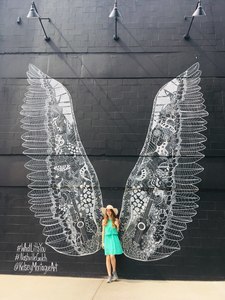9045767
Science Trimester 3
Descrição
Mapa Mental por Aemilia Blais, atualizado more than 1 year ago
Mais
Menos

|
Criado por Aemilia Blais
mais de 7 anos atrás
|
|
Resumo de Recurso
Science Trimester 3
- Lecture 18
- Who created the
Periodic Table?
- Dimitrii Mendeleev
- Dimitrii Mendeleev
- The Periodic Table
- 3 Categories
- Metals
- Shiny, Malleable, Ductile,
Good conductors of heat
and electricity, Solid at
room temperature, Most
abundant
- Shiny, Malleable, Ductile,
Good conductors of heat
and electricity, Solid at
room temperature, Most
abundant
- Metalloids
- Most qualities of meats and
non-metals, Electric charge,
Good in computers and
calculators
- Most qualities of meats and
non-metals, Electric charge,
Good in computers and
calculators
- Nonmetals
- Not shiny, Brittle, Not good
conductors of heat or electricity,
Solid or gas at room
temperature, Do not reflect light
- Not shiny, Brittle, Not good
conductors of heat or electricity,
Solid or gas at room
temperature, Do not reflect light
- Metals
- 3 Categories
- Who created the
Periodic Table?
- Combining Elements
- First, you have to know the
element's oxidation number
- Find at the top of the chart, or
use the sentence
- Use the oxidation number to find out
what it can combine with.
- Ex. -1 will go nicely with +1
- Sometimes it won't go in nicely,
and then you have to use the LCM
- Ex. -1 will go nicely with +1
- Use the oxidation number to find out
what it can combine with.
- Find at the top of the chart, or
use the sentence
- First, you have to know the
element's oxidation number
- Balancing Equations
- 4 Types of Equations
- Synthesis
- A+B= AB
- A+B= AB
- Decomposition
- AB=A+B
- AB=A+B
- Single Replacement
- AB+C=AC+B
- AB+C=AC+B
- Double Replacement
- AB+CD= AC+BD
- AB+CD= AC+BD
- Synthesis
- 4 Types of Equations
- Chemical Bonds
- Two Types
- Ionic Bond
- Oppositely charged atoms
- Ion - atom with a charge
- + Cation +
- - Anion -
- + Cation +
- Ion - atom with a charge
- Oppositely charged atoms
- Covalent Bond
- Combine by sharing electrons
- Sometimes is not equal
- Polar Molecule - unequal sharing
so has a charge on each end
- Nonpolar - opposite of polar
- Nonpolar - opposite of polar
- Polar Molecule - unequal sharing
so has a charge on each end
- Sometimes is not equal
- Combine by sharing electrons
- Electronegativity
- How strong an atom's
attraction for an electron is
- Calculate by looking at the electronegativity
chart and then subtract the two elements
- Then remember:
- Greater or equal to 1.7
- Ionic
- Ionic
- Between 1.7 and .3
- Polar Covalent
- Polar Covalent
- Less than .3
- Non polar Covalent
- Non polar Covalent
- Greater or equal to 1.7
- Then remember:
- Calculate by looking at the electronegativity
chart and then subtract the two elements
- How strong an atom's
attraction for an electron is
- Ionic Bond
- Two Types
- Binary Formulas
- Rules for Writing
- Write the +element
Write the - element
Write subscripts Use
the LCM for the
subscripts
- Write the +element
Write the - element
Write subscripts Use
the LCM for the
subscripts
- Rules for naming
- Write the 1st element (+)
full name Write the root
of the second element
Add the suffix -ide
- Write the 1st element (+)
full name Write the root
of the second element
Add the suffix -ide
- Rules for Writing
- Polyatomic Ions
- Combinations of elements that act as one
- Rules for combining
with other elements
- Should combine normally, just remember to think of it
as a unit, rather than separate elements
- When writing, put in parentheses and subscripts
go on the outside
- Should combine normally, just remember to think of it
as a unit, rather than separate elements
- Rules for writing with
other elements
- Write the positive element first. (This will typically not be
the poly) Then write the poly. Use the full name of each.
- Write the positive element first. (This will typically not be
the poly) Then write the poly. Use the full name of each.
- Typically negative
ox. number
- Rules for combining
with other elements
- Combinations of elements that act as one
Quer criar seus próprios Mapas Mentais gratuitos com a GoConqr? Saiba mais.
